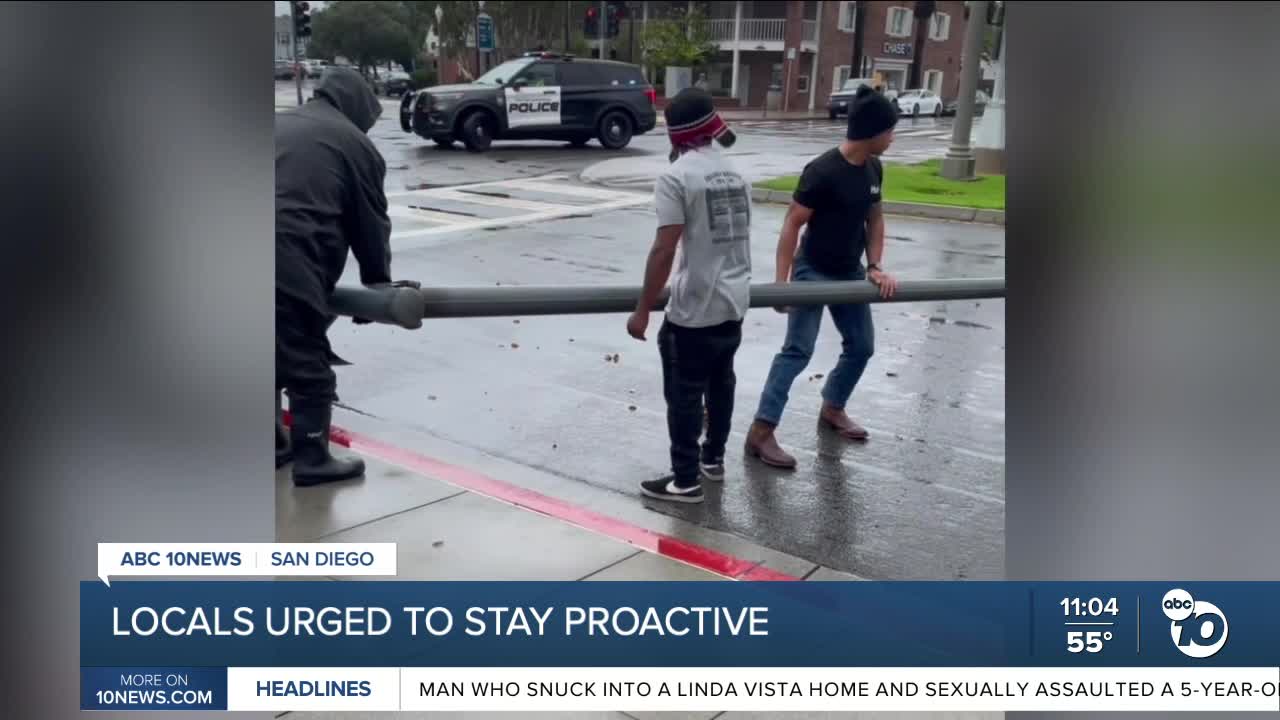SAN DIEGO (KGTV) — San Diego is still recovering from the impacts of the recent downpour — from flooded streets to damaged infrastructure — and with another round of wet weather on the way, local experts say some homeowners are becoming more proactive, but there’s still more that can be done.
Over the rainy weekend, residents in Coronado were caught off guard when a traffic light pole came crashing down in the middle of a busy street. Video shows people rushing in to move it out of the roadway.
“That was definitely a first time I've ever seen it, so I had to take the opportunity to move it,” said Malcolm Wade, a mechanic at Holland’s Bicycles — just steps away.
Wade says the base of the pole was rusted, raising concerns about the condition of other street fixtures.
“Like the whole bottom of the pole was rusted out, so there's no telling which other poles could go,” he said.
Across the county, the remnants of the storm are showing up in different ways — and for roofing and maintenance experts, the calls for help come quickly.
“We see a lot of emergency [calls],” said Dana Logsdon, CEO of Dana Logsdon Roofing and Solar. “When we have a normal weather pattern in San Diego, it'll rain and then the rain goes away and people forget about it.”
But during strong storms and high winds, Logsdon says the damage becomes more obvious.
“You'll see wind damage on the roof, lifted shingles, lifted tiles… wind lift and those blown off,” he explained. “And then of course we'll see tree damage — trees falling on roofs and creating damage.”
He says the best protection is preparation.
“You want to try to mitigate. You don't want mold; you don't want mildew. You really want to be proactive. But when we get these big storms, it's surprising to a lot of people that the roofs are leaking.”
Awareness extends beyond rooftops. Arborist Bradley Brown with Tree Life Consulting says homeowners should also pay attention to what’s happening at the base of their trees.
“If they see flat spots on a tree trunk where the trunk meets the ground — if it's flat, that can be of concern,” Brown said. “If there's not a flare at the base of a tree and it’s flat on one side, then you could have a problem. In those situations, it’d be a good idea to have a professional look at the trees after the storm.”
As the next storm approaches, residents like Wade say they’re prepared for whatever comes.
“We'll see if it does fall. I mean, I'm here for it — so I'll be here to help,” he said.




